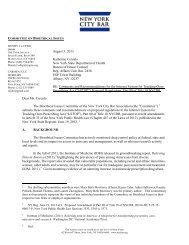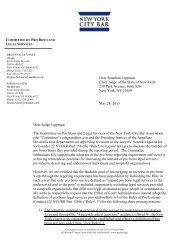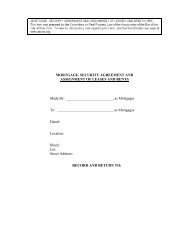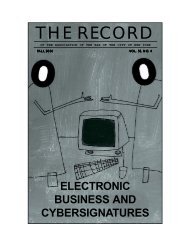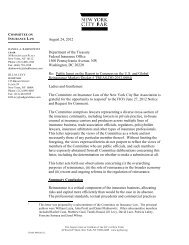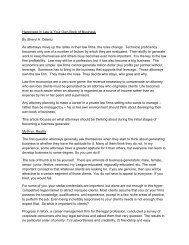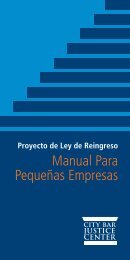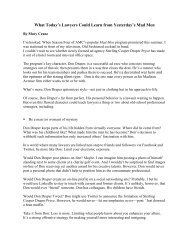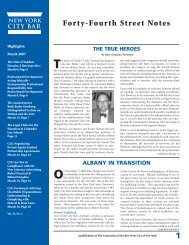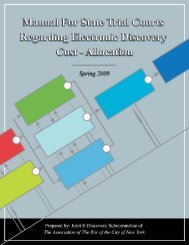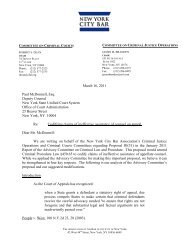2007 Issue 1 - New York City Bar Association
2007 Issue 1 - New York City Bar Association
2007 Issue 1 - New York City Bar Association
You also want an ePaper? Increase the reach of your titles
YUMPU automatically turns print PDFs into web optimized ePapers that Google loves.
P R E V E N T I O N A N D P R O S E C U T I O N O F T E R R O R I S T A C T S<br />
committee made up of all members of the Security Council to implement<br />
the resolution. 119<br />
(C) Export Controls<br />
Export control regimes are made up of groups of states that agree to<br />
“restrict the sale of goods to certain countries or to ensure that safeguards<br />
or end-use guarantees are applied to the export and sale of sensitive technologies<br />
and materials.” 120 The United States regards these regimes as crucial<br />
to the fight to keep dangerous materials out of the hands of so-called<br />
rogue states and terrorists.<br />
Although these arrangements cover many of the same materials that<br />
are regulated under the treaties listed above, the goals of these regimes<br />
differ from those of treaties. A treaty regulating a potentially dangerous<br />
material generally establishes a comprehensive ban on the maintenance<br />
or use of that material for hostile purposes and establishes an accounting<br />
or inspection regime for the peaceful use of these materials. In contrast,<br />
export control regimes are not legally binding at the international level;<br />
they involve a grouping of countries that do not restrict their own use of<br />
the subject material but voluntarily agree to limit, through legislation<br />
and regulation, transfers to foreign nationals, entities and states not meeting<br />
certain criteria (for example, acceptance of IAEA safeguards) or otherwise<br />
deemed untrustworthy. Export controls are often able to control a broader<br />
scope of dual-use materials, including software, lab equipment and other<br />
technology that are not covered by the treaties.<br />
The export control regimes described below have made efforts post-<br />
9-11 to strengthen their controls against terrorist acquisition of the subject<br />
materials.<br />
(1) Australia Group<br />
One export control group that is specifically mentioned in the U.S.<br />
National Strategy to Combat Weapons of Mass Destruction is the Australia Group.<br />
The Australia Group is an “informal network of countries that consult on<br />
and harmonise their national export licensing measures on [chemical and<br />
biological weapon] items.” 121 The group is made up of thirty-three partici-<br />
119. See Merav Datan, Security Council Resolution 1540: WMD and Non-State Trafficking,<br />
DISARMAMENT DIPLOMACY, April/May 2005.<br />
120. Nuclear Threat Initiative, Glossary of Terms, available at http://www.nti.org/b_aboutnti/<br />
b_index.html.<br />
121. The Australia Group: <strong>New</strong> Measures to Fight the Spread of Chemical and Biological<br />
Weapons, Australia Group Press Release AG/Jun02/Press/7, June 7, 2002. Available at http:/<br />
/projects.sipri.se/cbw/research/AG-press-Jun02.html.<br />
2 0 0 7 V O L. 6 2 , N O. 1<br />
55



